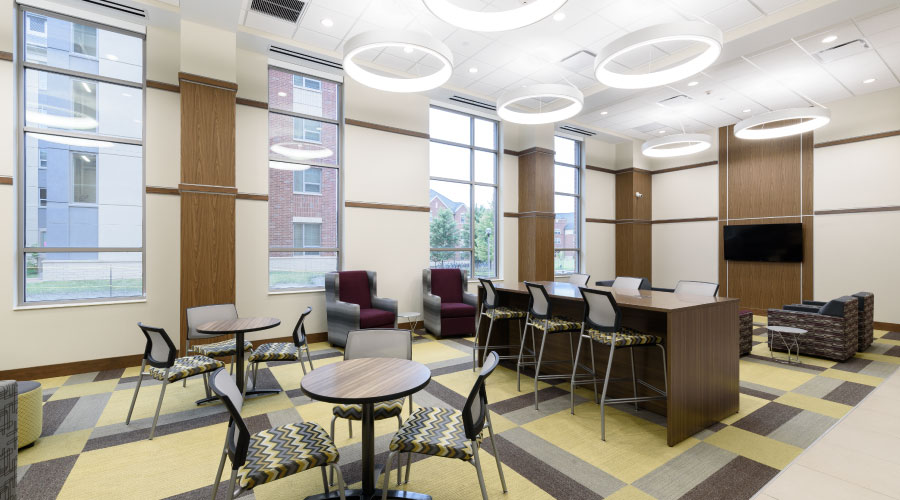Aim for Goals for Lighting Retrofits, Including Higher Productivity
It's no secret that higher light quality — either from daylighting or proper lamping — leads to higher occupant satisfaction; Higher satisfaction, in turn, can boost productivity.
"That's why it is so important to make sure that energy efficiency changes will not reduce light levels below a satisfactory level," Miller says.
And light levels are not the only issue. The introduction of glare into a space — or harsh shadows on faces and objects — and detraction of visual interest from a space all can lower productivity, Miller says.
While it's hard to quantify productivity costs and rewards, studies from the International Association of Lighting Designers did quantify "operational costs" for building owners. When compared against rent, utilities (other than lighting), and maintenance, lighting operation required 0.2 percent of an annual operations budget, and the salaries and benefits of employees accounted for nearly 86 percent.
With a lighting upgrade, the important thing is to avoid actions that will "save a nickel in energy, but give up a dollar in productivity," says Kohn.
Consider All Factors
To ensure success on a lighting upgrade, it's vital to establish goals and objectives as part of the design process.
"List all the goals that are to be considered," Graf says. "Visual comfort, glare-free lighting, natural light integration, budgets, etc. Consider maintenance, lower energy costs, and purchasing equipment regionally."
In a lighting retrofit, it's important to remember that the lighting system itself isn't the only factor that affects lighting quality. If a lighting system was originally designed for walls that have a 60 or 70 percent reflectance level, and those walls get painted a darker color, the space will seem dimly lit, Graf says.
Because of the range of factors that affect lighting, facility managers often seek some form of outside help with a lighting upgrade. For facility managers who go that route, it's important to find independent, unbiased advice.
Graf says that lighting designers are hired to perform an unbiased analysis. "Facility managers need to examine the scope of the project," he says. "What does it cost? What would it take to achieve the organization's needs? After that, we can bring back to the owner the cost analysis, the benefits and more."
What's more, a lighting designer can offer a broad look at the entire lighting system. "If the lighting system is terrible to begin with, a facility manager isn't always aware of what he or she needs to know," Kohn says.
The old cliché about an ounce of prevention is true. "A little bit of expertise up front can go a long way," says Baney. "If you're talking about a 10-story office building, and the same problem is repeated in every fixture for ten floors, it's a mess."
Loren Snyder, a contributing editor for Building Operating Management, is a writer who specializes in facility issues. He was formerly managing editor of Building Operating Management.
Related Topics:













